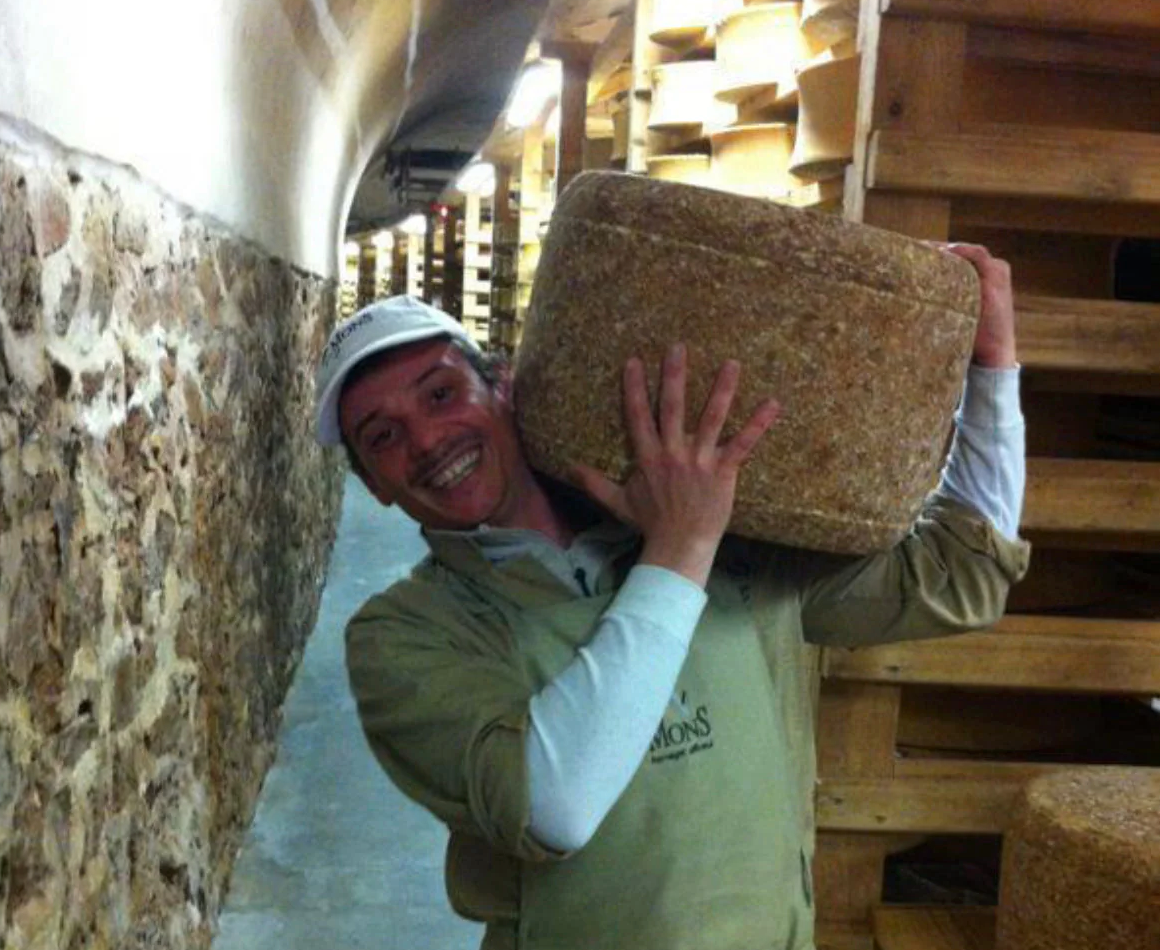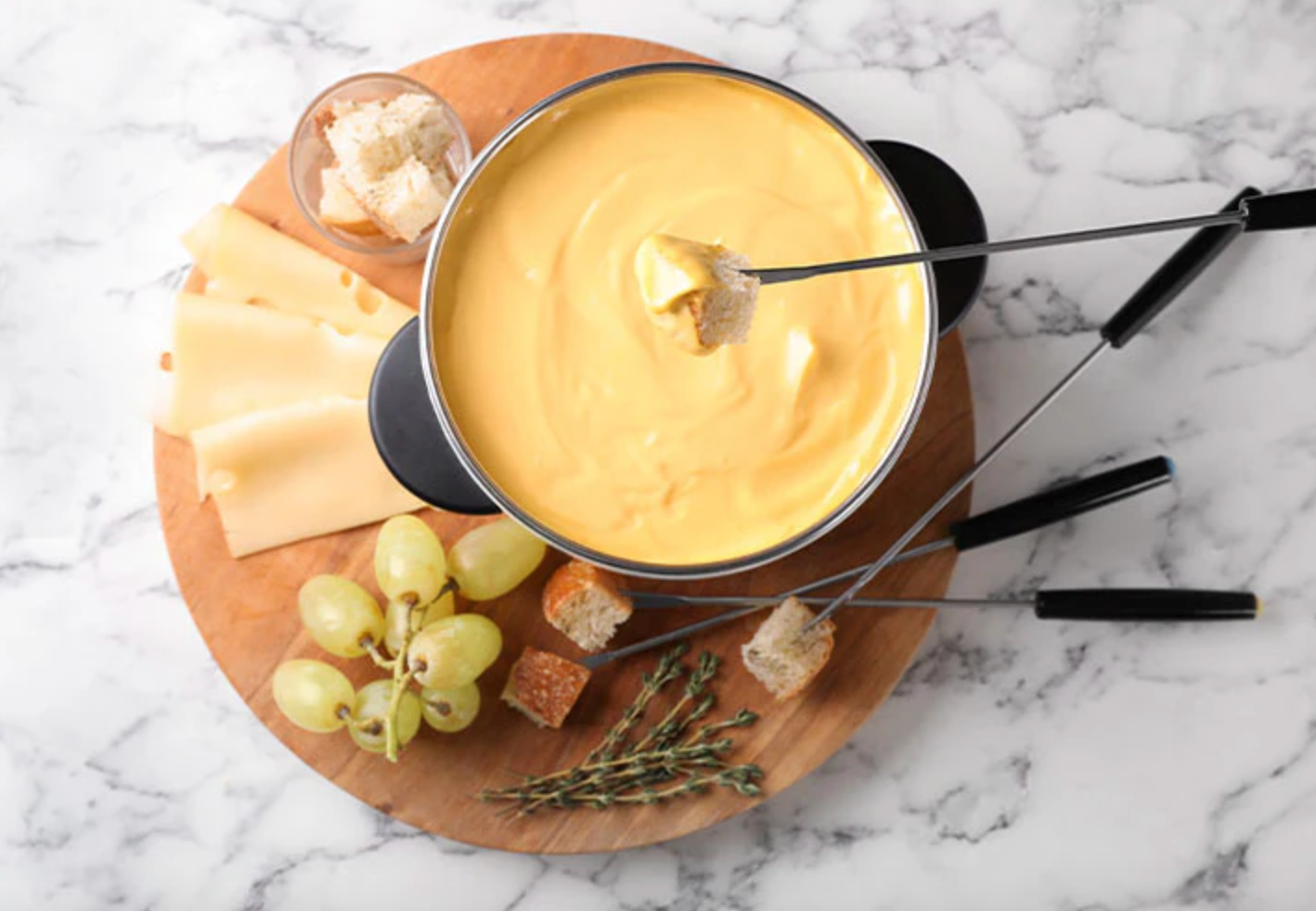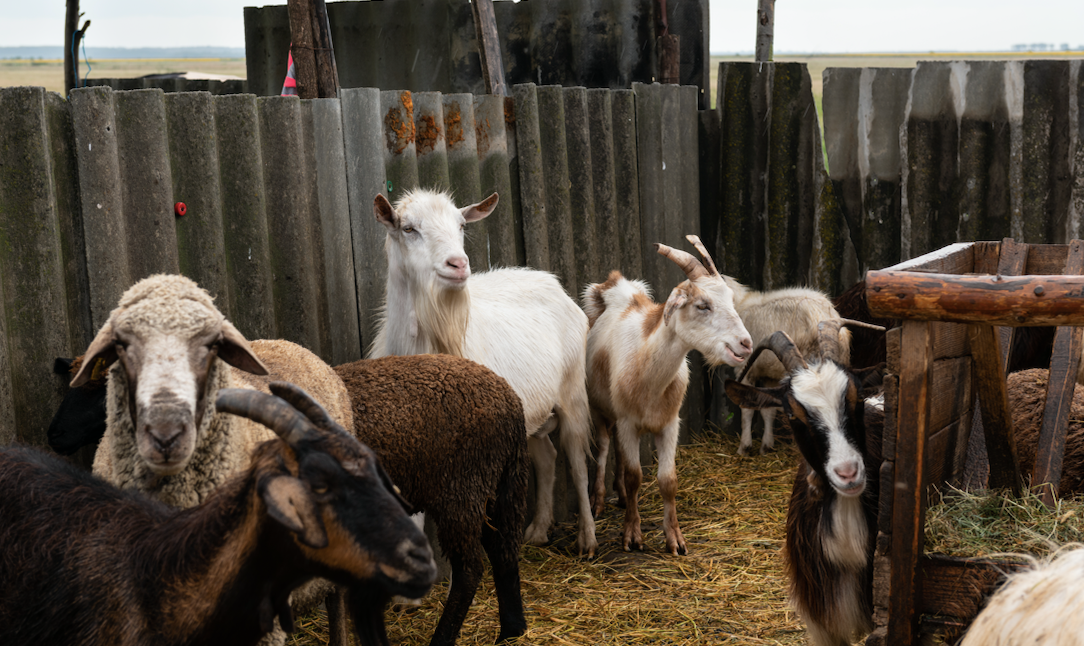Welcome to the World of Cheese
Your guide to understanding the fascinating world of milk, cheese, and maturation.
THE ESSENTIAL: MILK
Milk is the cornerstone of every cheese. Whether it comes from cows, sheep, or goats, each type of milk offers a unique blend of fats, proteins, vitamins, and minerals—not to mention a distinctive taste profile.
Did you know? Milk is composed of around 87% water. This high water content means that it takes about10 litres of milk to produce just 1 kilogram of cheese. During the cheesemaking process, most of the water is removed, leaving behind the solids—mainly proteins and fat—that form the cheese.
But that’s not all: as cheese ages, it continues to lose moisture, which leads to a natural weight loss. This evaporation intensifies flavour but reduces the final yield.
Why is Milk White?
Milk contains fats and proteins that scatter light, making it appear white. The more fat it contains, the whiter it looks. Skimmed milk often appears bluish due to lower fat and higher casein concentration.
From Farm to Fromage
High-quality milk starts with happy, healthy animals. Artisanal farms often operate on a small, family scale, ensuring each cow is well-fed, cared for, and even named. Their diet changes with the seasons, and meticulous hygiene is maintained during milking. Milk is then chilled, collected, and quickly transported for transformation.
Types of Milk Processing
-
Raw Milk: Never heated above 40°C. Delicate and rich in natural flora.
-
Microfiltered/Ultrafiltered Milk: Bacteria are removed while preserving nutrients and flavour.
-
Thermized Milk: Lightly heated to remove pathogens while keeping most natural flora.
-
Pasteurized Milk: Heated to 72°C for 15–20 seconds to eliminate harmful bacteria.
-
Sterilized Milk (UHT): Heated to 140°C for a few seconds. Long shelf life, less flavour.
AOP: Protected Designation of Origin
A cheese with AOP status is more than a product; it's a cultural legacy. Produced in a specific region with strict rules, AOP cheeses are rooted in their terroir and traditional methods.
FROM MILK TO CHEESE
Main Breeds & Milk Sources
Cheese may be made from cows (Holstein, Montbéliarde, etc.), goats (Saanen, Alpine), or sheep (Lacaune), with each breed offering distinct characteristics in their milk.
Raw Milk Cheeses
These are handcrafted daily with fresh milk never heated above 40°C. They're nutritionally superior and develop complex flavours that reflect the seasons and environment.
The Cheese-Making Process
-
Milking: Collected twice daily, refrigerated immediately.
-
Collection: Milk is tested and transported.
-
Curdling: Rennet and lactic ferments coagulate the milk.
-
Moulding: The curd is shaped.
-
Draining: Whey is removed.
-
Salting: Preserves and seasons the cheese.
-
Ripening: The final step, unlocking texture and flavour.
Why Does Cheese Cost More?
Not all cheeses are created equal. Handmade cheeses, especially from raw milk, are produced in small batches by skilled artisans. Every step is done with care: ladling curds by hand, monitoring temperature, and adjusting techniques based on the season.
Then comes the ageing.The longer a cheese is aged, the more it costs to produce. While it rests in the cellar, it takes up space, needs regular care (flipping, brushing, monitoring), and continues to lose weight. In a way, the cheese is “paying rent” to stay in the cave. This time investment is reflected in the final price. You're not just buying cheese—you're tasting patience, precision, and passion.
FAMILIES OF CHEESE & WINE PAIRINGS
-
Fresh Cheeses: Light and creamy. Pair with sweet wines or dry aromatics.
-
Bloomy Rinds: Soft, white, mushroomy. Pair with Beaujolais or Touraine.
-
Washed Rinds: Orange, aromatic. Pair with Gewurztraminer.
-
Uncooked Pressed: Rich and dense. Pair with spicy reds or Châteauneuf-du-Pape.
-
Cooked Pressed: Hard and nutty. Pair with Chardonnay or Jura's vin jaune.
-
Blue Veined: Sharp and crumbly. Pair with dessert wines or Banyuls.
-
Goat Cheeses: Tangy and diverse. Pair with Loire Valley Sauvignon Blanc.
RIPENING: THE ART OF TIME
Cheese ripening depends on temperature, humidity, and microbial activity. Each cheese family ripens differently, often guided by affineurs who ensure quality and flavour peak at the right moment.
Camembert Example
-
Week 1–2: Flavour just forming
-
Week 4: Full expression
-
Week 6+: Deep complexity
Preservation Tips
Store cheese in its original wrapping in a humid, cool place like your fridge's vegetable drawer. Avoid airtight containers. Buy in small quantities to enjoy it at peak ripeness.
FAT CONTENT & SEASONALITY
Cheese fat content varies with ripening. Soft cheeses contain more water, so less actual fat per gram than hard cheeses. Milk, and thus cheese, changes with the seasons based on the animals' diet. Choose your cheeses according to the season to enjoy them at their best.
Spring/Summer: Fresh goat cheeses, bloomy rinds
Autumn/Winter: Blues, long-aged hard cheeses
Winter Only: Mont d'Or
At K-SEIN Fromagerie, we invite you to taste, learn, and savour the incredible diversity that milk and time can create. Join us in exploring tradition, flavour, and terroir—one cheese at a time.



